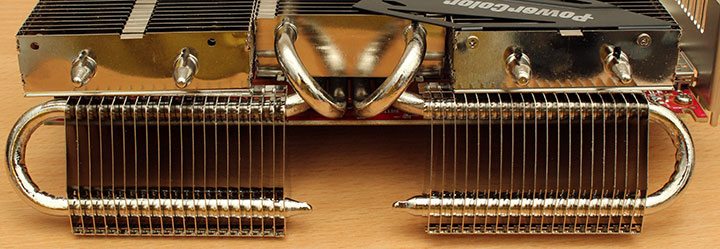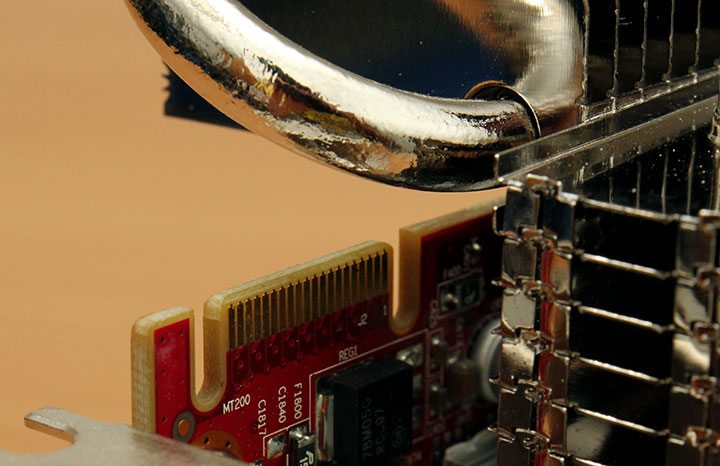PowerColor 7850 SCS3 Passive Review
Chris Hadley / 12 years ago
To be a passively cooled card, you need to make up the loss of the fan with additional surface are through which to dissipate heat. As a result, PowerColor’s heat sink is a lot bigger than we would normally, extending the cards dimensions as it overhangs the side of the PCB. The cooler also features and open air design, which as we will see is crucial for the operation of a card of this nature.

To help transfer heat to all parts of the aluminum heat sink evenly, a number of heat pipes run from the core in a direct touch design for optimal performance. As seen below, the extended heat sink also turns up and around the cooler to aid in increasing surface area whilst not pushing the cooler too far towards where a chassis side panel would eventually be.

Whilst the cooler wraps around the card to increase cooling space, there is one slight design floor with one of the heatpipes. PowerColor have included the CrossFireX connector on the PCB and by design the 7850 is capable of a 2-way configuration, however on this card this would not be possible as the heatpipe obstructs the connector from being used.

Moving away from the cooler, the reference speed card only requires the extra power from a 6-pin PCIe cable which in this case faces out from the end of the PCB.

In a slight alteration to the reference display output configuration, the SCS3 features a DL-DVI, HDMI and a full size DisplayPort as opposed to twin mDP instead.

Given the fact that this is a passively cooled card, PowerColor need to do what they can in order to keep the chips temperatures down in the first instance so this means not overclocking the card at all. As a result we see a reference clock speed of 860MHz and a memory speed of 1200MHz (4.8Gbps effective)




















